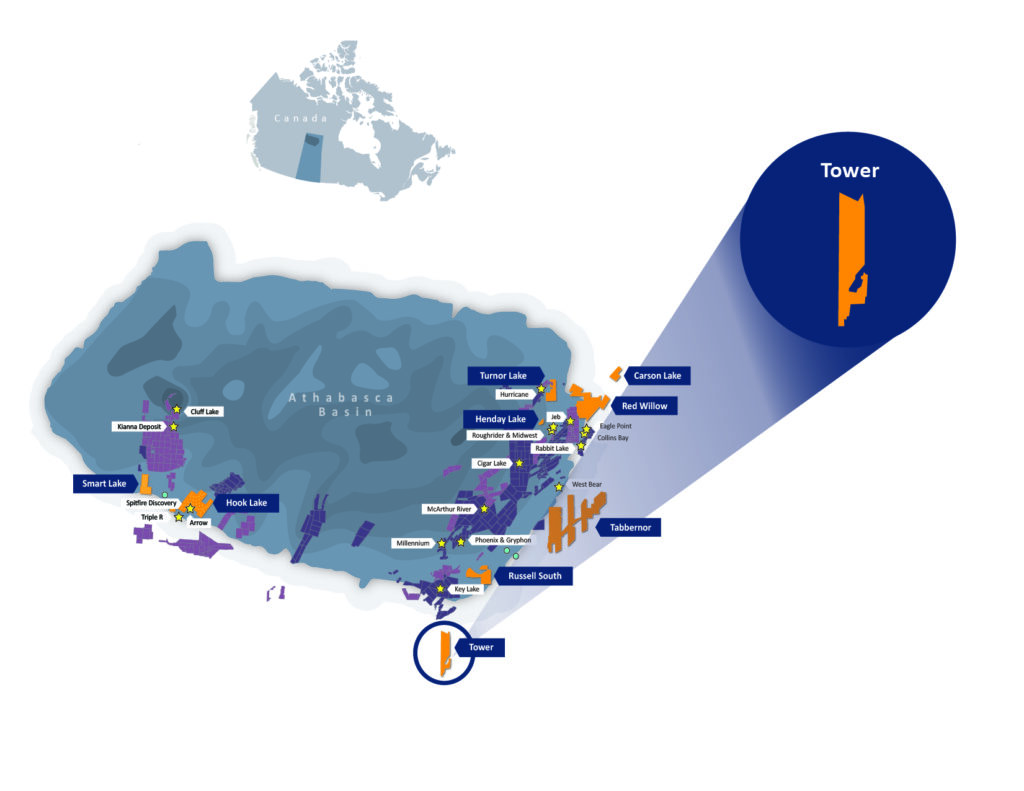Geologically Controlled by the Tabbernor Fault System
About the Tower Project
Originally known as the “MillKey” Project, the 100%-owned Tower Project consists of 10 claims totaling 23,159 hectares located within the Tabberbor Fault System.
The Tabbernor Faults are a deep seated, 1,500 kilometre crustal shear system that runs north through the Athabasca Basin. The system not only hosts over 80 historic mines and gold occurrences but as well cross cuts the Basin’s mine trend aligning itself with 8 of the Basin’s largest uranium discoveries.
During the summer of 2022, an exploration program consisting of a 930 line-kilometre, airborne VTEM™survey over the Tower project. Short EM conductors were identified during the survey.
The strong north-south trend of the major fault interpreted to bisect the project is thought to be part of the regionally significant, deep-seated, Tabbernor Fault System. The north-south trending structural corridor is interpreted to be associated with the Key Lake mine located to the north.
The Tabbernor Fault System is a geological feature located in close proximity to the Athabasca Basin in Saskatchewan. It is characterized by a network of interconnected faults that run through the region. These faults are primarily oriented in a northeast-southwest direction and have played a significant role in shaping the geological history of the area.
Geological studies and exploration efforts have focused on understanding the intricate nature of the Tabbernor Fault System to identify potential areas with high uranium mineralization. By studying the fault system’s geometry, displacement patterns, and associated rock formations, we can gain valuable insights into the location and extent of uranium deposits within the Athabasca Basin.
The geological significance of the Tabbernor Fault System and its potential for hosting valuable mineral deposits make it a focal point for ongoing exploration and further studies within the region.
